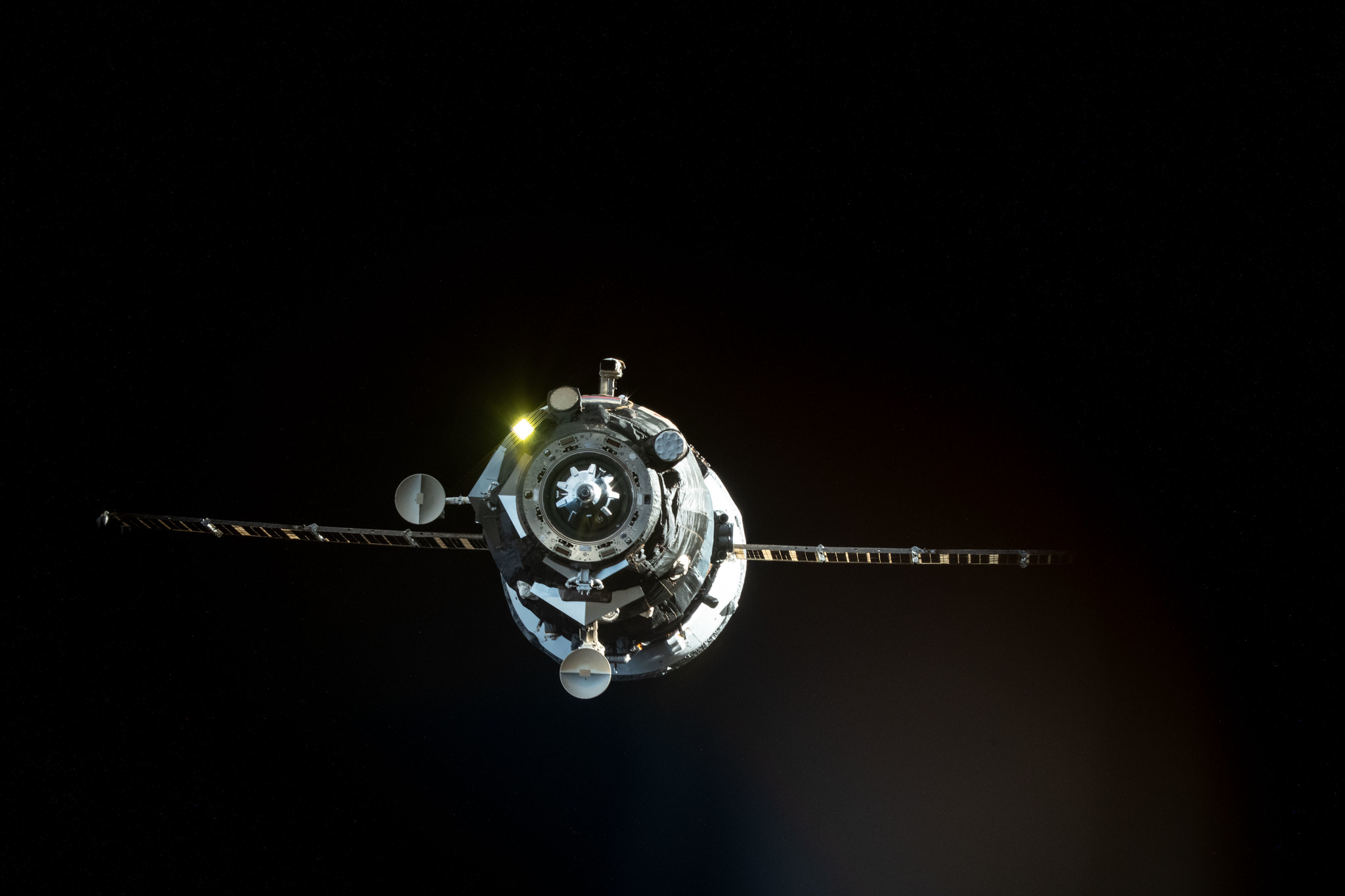NASA to Provide Coverage of Progress 90 Launch, Space Station Docking
NASA will provide live launch and docking coverage of a Roscosmos cargo spacecraft delivering nearly three tons of food, fuel, and supplies to the Expedition 72 crew aboard the International Space Station. The unpiloted Progress 90 spacecraft is scheduled to launch at 7:22 a.m. EST (5:22 p.m. Baikonur time) Thursday, Nov. 21, on a Soyuz […]

NASA will provide live launch and docking coverage of a Roscosmos cargo spacecraft delivering nearly three tons of food, fuel, and supplies to the Expedition 72 crew aboard the International Space Station.
The unpiloted Progress 90 spacecraft is scheduled to launch at 7:22 a.m. EST (5:22 p.m. Baikonur time) Thursday, Nov. 21, on a Soyuz rocket from the Baikonur Cosmodrome in Kazakhstan.
Live launch coverage will begin at 7 a.m. on NASA+ and the agency’s website. Learn how to watch NASA content through a variety of platforms, including social media.
After a two-day in-orbit journey to the station, the spacecraft will dock autonomously to the space-facing port of the orbiting laboratory’s Poisk module at 9:35 a.m., Saturday, Nov. 23. NASA’s coverage of rendezvous and docking will begin at 8:45 a.m. on NASA+ and the agency’s website.
The Progress 88 spacecraft will undock from the Poisk module on Tuesday, Nov. 19. NASA will not stream undocking.
The spacecraft will remain docked at the station for approximately six months before departing for a re-entry into Earth’s atmosphere to dispose of trash loaded by the crew.
The International Space Station is a convergence of science, technology, and human innovation that enables research not possible on Earth. For more than 24 years, NASA has supported a continuous U.S. human presence aboard the orbiting laboratory, through which astronauts have learned to live and work in space for extended periods of time. The space station is a springboard for developing a low Earth economy and NASA’s next great leaps in exploration, including missions to the Moon under Artemis and, ultimately, human exploration of Mars.
Get breaking news, images and features from the space station on Instagram, Facebook, and X.
Learn more about the International Space Station, its research, and its crew, at:
-end-
Claire O’Shea / Josh Finch
Headquarters, Washington
202-358-1100
claire.a.o’shea@nasa.gov / joshua.a.finch@nasa.gov
Sandra Jones
Johnson Space Center, Houston
281-483-5111
sandra.p.jones@nasa.gov
What's Your Reaction?










































